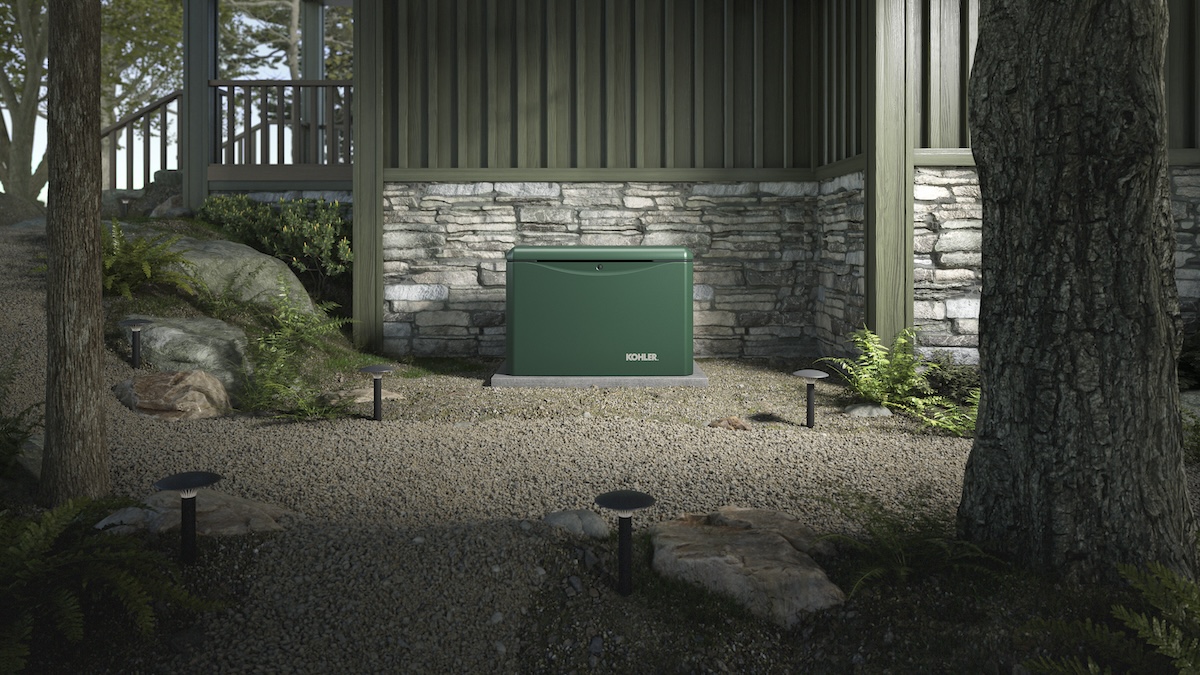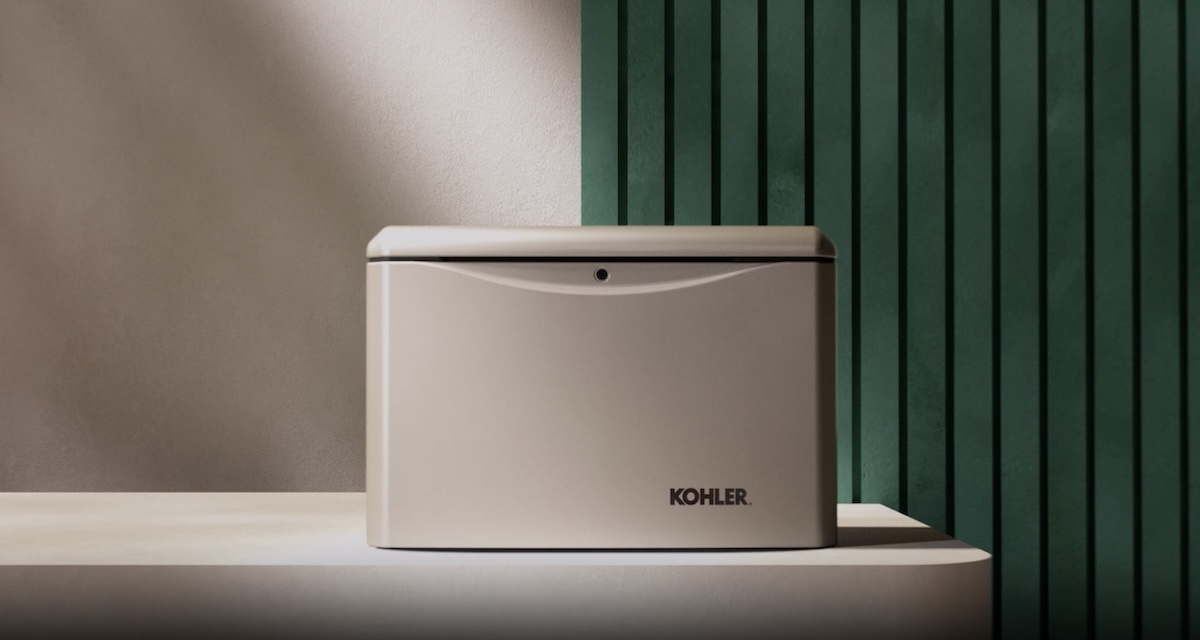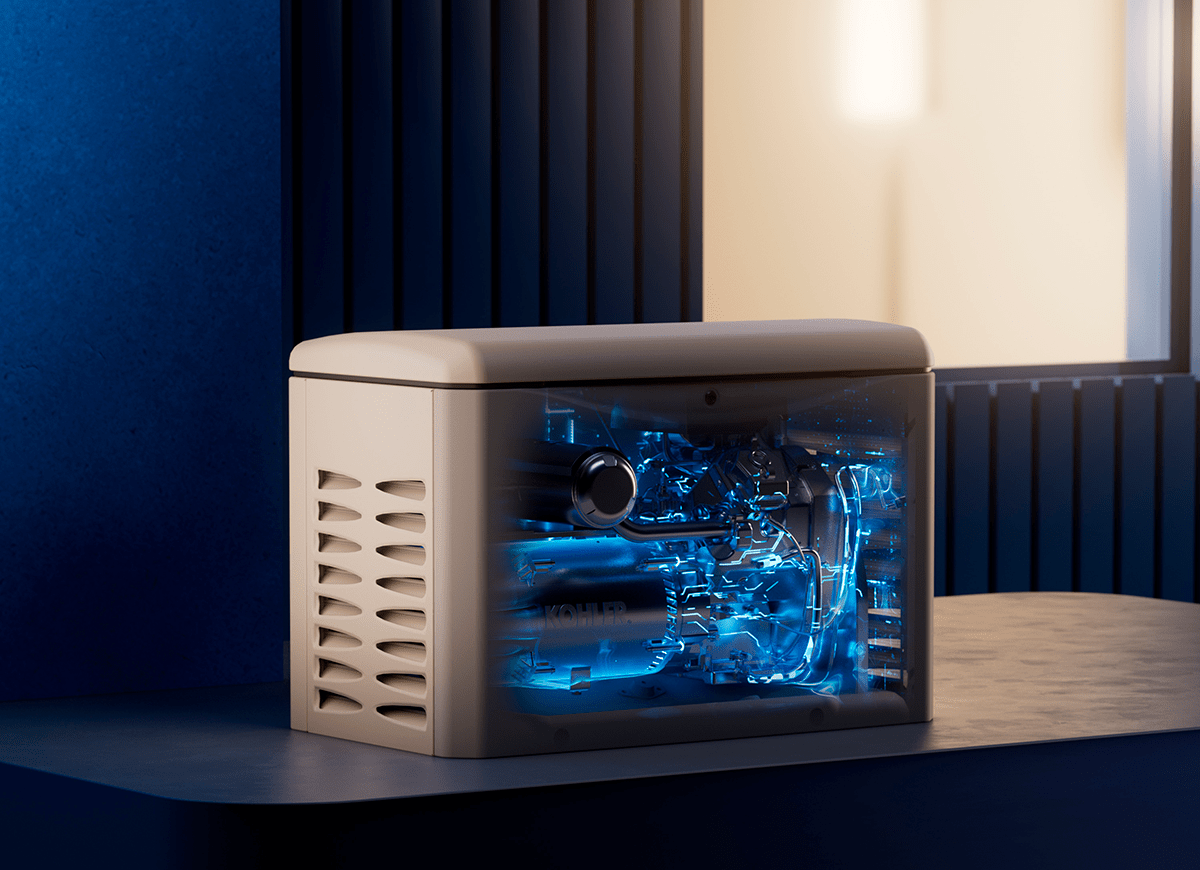We may earn revenue from the products available on this page and participate in affiliate programs. Learn More ›
As storms caused by extreme weather increase in frequency and intensity and aging power grids struggle to keep up with increasing demand, power outages are on the rise. From 2011 to 2021, the United States experienced 64 percent more power outages than from the previous decade of 2000 to 2010, according to Climate Central.
No matter how long power outages last, you can either suffer through them in the dark and lose the systems that keep your family safe and comfortable or prepare by investing in a whole-home generator such as a KOHLER standby generator. These generators can power your entire home for days. And since they tie into your home’s electrical panel and kick on automatically when the power goes out, you don’t even need to be home to turn them on.

In just 7 years, the duration of an average power outage has increased by 89 percent.
Power outages are becoming more common and are lasting longer due to the increased frequency of extreme weather, including devastating hurricanes, prolonged heat waves, and raging wildfires. The average duration of a power outage in the U.S. increased 89 percent between 2013 and 2020, according to the Energy Information Administration. Common causes of power outages across the country include the following:
Severe Storms
High winds coupled with heavy rains that loosen the soil and topple trees can take down power lines. Lightning can also cause damage to power lines, either directly or by damaging nearby trees. Severe storms can lead to mass power outages.
Winter Weather
Heavy snowfall and ice can also wreak havoc on the electrical grid. Snow and ice can accumulate on trees, causing branches to fall onto nearby power lines. Precipitation can also build up on the lines themselves, creating enough weight to bring them down.
Motor Vehicle Accidents
A surprising number of power outages are the result of motor vehicles crashing into utility poles, taking down power lines and utility equipment. Duke Energy, a power company that serves parts of the Southeast and Midwest, credited more than 7,000 power outages in 2019 to motor vehicle accidents.
Demand
Power outages are common during extreme summer heat waves as electricity users attempt to cool their homes using air conditioning. Unfortunately, blackouts as a result of demand are becoming more and more common as summers get hotter and hotter. In fact, the North American Electric Reliability Corporation (NERC) found one third of the country to be at a high risk of blackouts this past summer.
Wildfires
If you live in parts of the country prone to power outages, such as Northern California, then you know that wildfires can wreak havoc on the grid, causing widespread outages that can last for days. Some 28,000 homes lost power due to wildfires around Lake Tahoe in California last August. Even the risk of weather conducive to wildfires can result in Public Safety Power Shutoff (PSPS) outages that can last from several hours to multiple days.

Some areas of the country are more prone to power outages than others.
A combination of severe weather and older utility infrastructure makes certain parts of the country more prone to outages than others. Rural areas with older power lines that are further from power sources and have fewer resources for dealing with outages will experience longer and more frequent blackouts than urban areas.
Regions of the country that experience more extreme weather are also more prone to having more frequent and longer power outages. From 2000 to 2021, the Southeast, Midwest, and Northeast experienced the greatest number of outages due to weather, according to Climate Central. Since utility crews often have to wait for extreme weather to pass or roads to clear to repair downed lines, power outages caused by severe weather often last longer than those caused by other factors.
For example, Florida’s exposure to hurricanes and frequent electrical storms makes it a state that’s more prone to power outages than other parts of the country. The state experiences an average of nearly 20 hours without power each year—far greater than the national average.
Installing a standby home generator is the best way to prepare for prolonged power outages.
Whether you live in a high-risk area or not, chances are you’ll experience a few power outages each year. The best way to avoid having to go without power for long periods is to invest in a standby home generator like the KOHLER 26 kW Home Generator. Whole-home generators are permanently installed outside your home, typically near your electrical panel, sitting at the ready for when you need them.
When your home experiences a power outage, a standby generator kicks on automatically within seconds, ensuring your fridge stays cold, the lights stay on, and your electronics stay powered up through the blackout. Unlike portable generators that are loud, must be operated and regularly refueled, require running extension cords, and have limited power output, whole-home generators run off cleaner liquid propane or natural gas and are typically sized to power everything in your home for several days.

The KOHLER 26 kW Home Generator restores power within seconds.
With their high power output and surprisingly quiet operation, KOHLER’s home generators can power everything in a large home, including power-hungry air conditioners and heat pumps; major appliances like refrigerators, washers, and dryers; and small appliances, lights, and electronics. The 26 kW generator, which runs on natural gas or liquid propane, ties into your home’s electrical panel and switches over within 10 seconds of an outage.
Built-in sensors automatically check oil level and pressure to protect the engine while it’s running, even when you’re not around to monitor it. This is especially helpful when you don’t know how long it will take for the power to come back on.
Those worried about how a large standby generator will impact their home’s aesthetics will like the fact that KOHLER home generators come in 14 colors, including three camouflage patterns. And since it exercises at just 56 decibels, which is about the level of a normal conversation, your KOHLER generator will maintain peace and quiet in your neighborhood.


